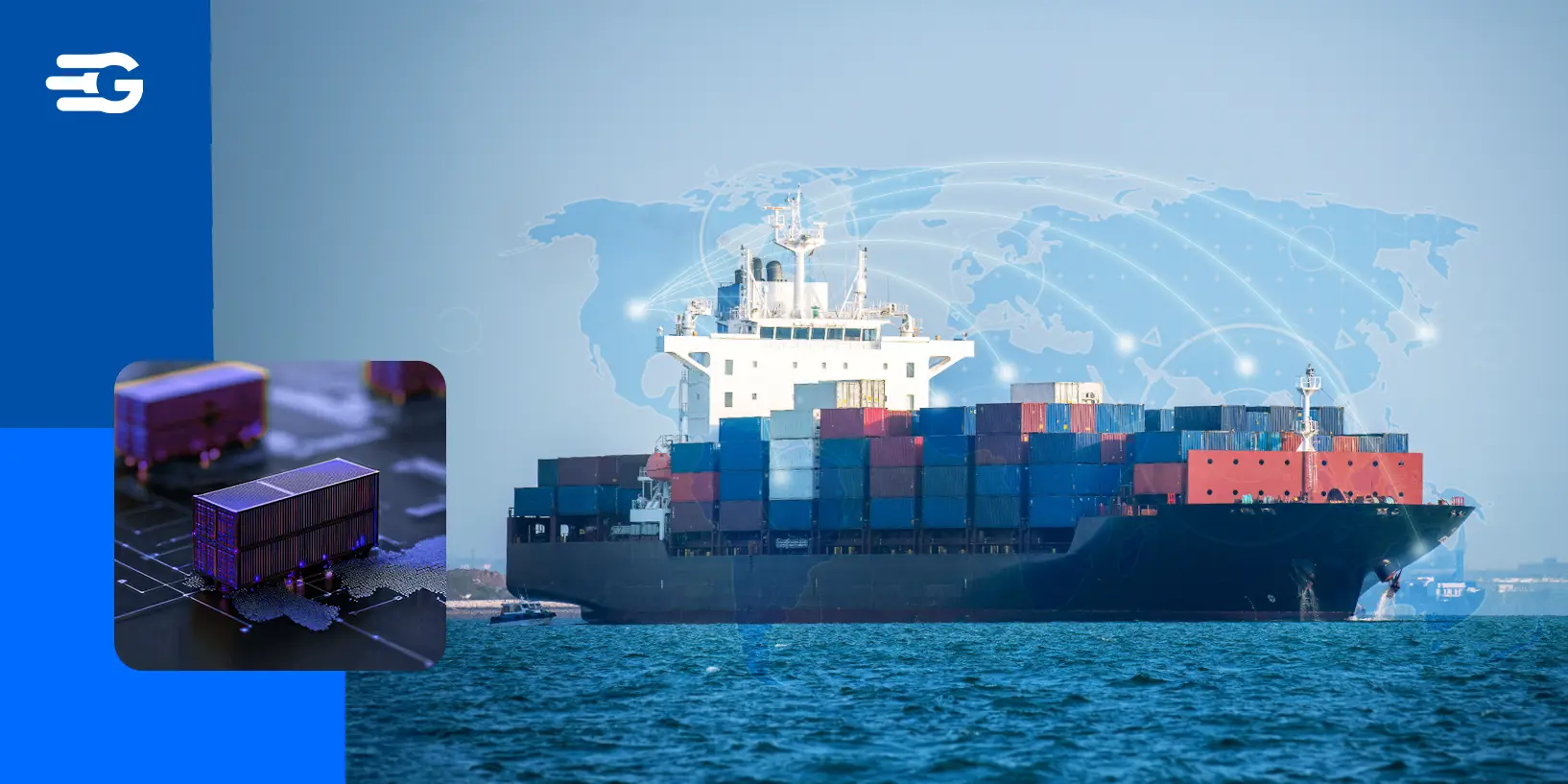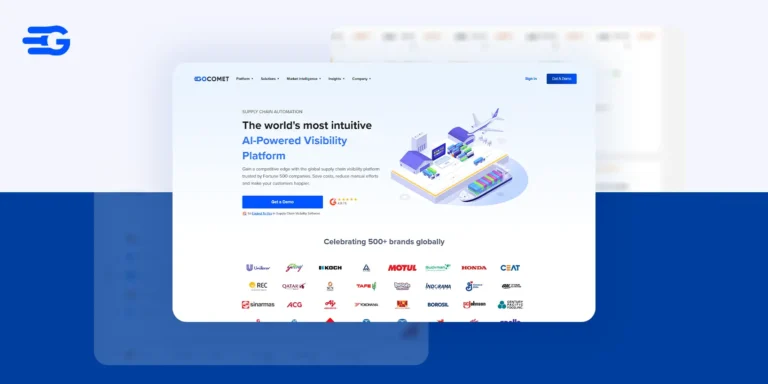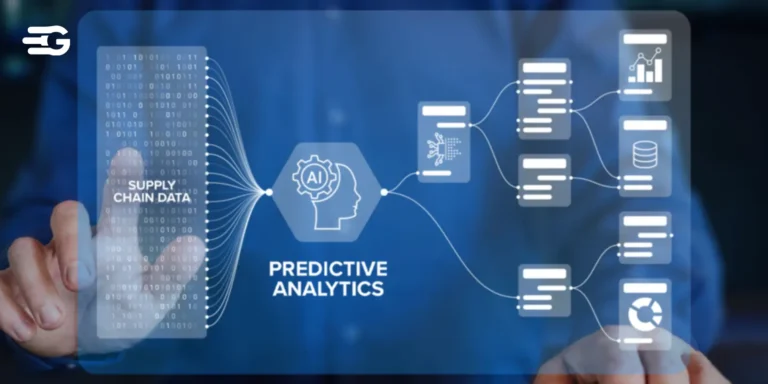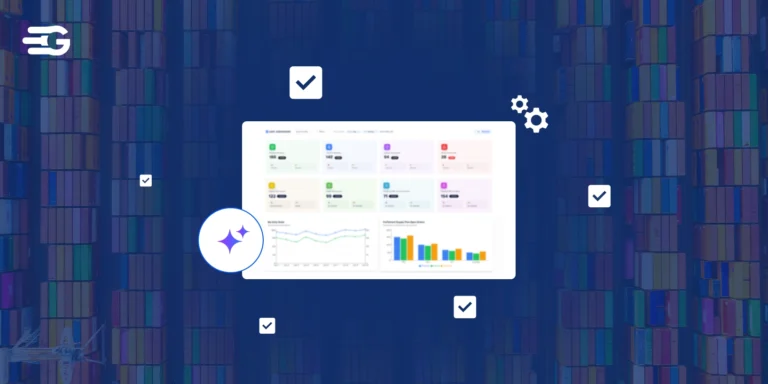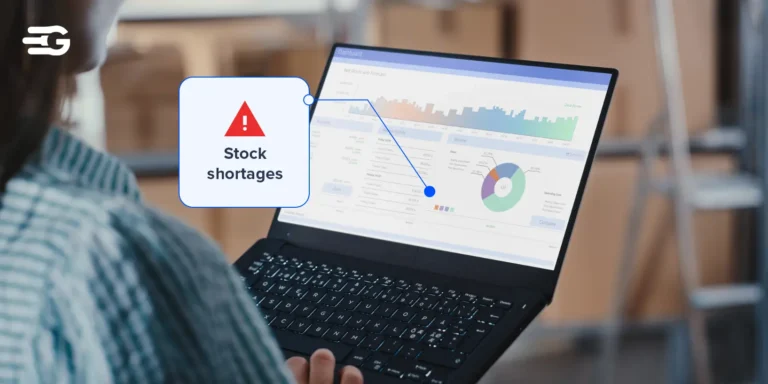Digital Supply Chain Strategy: Unlocking Business Growth
Table of Contents
Having a digital supply chain strategy is now more important than ever. Every business aiming to stay competitive in a highly dynamic market, needs to focus on building a digital supply chain strategy.
Traditional supply chains rely on manual processes and siloed data, which leads to delays, inefficiencies, and increased costs. In contrast, digital supply chain management leverages automation, real-time visibility, and data analytics to streamline operations and improve decision-making.
But what exactly is a digital supply chain? How does it differ from traditional models? And how can businesses implement and benefit from supply chain digitalization? This guide covers everything you need to know, including key components, implementation strategies, challenges, and real-world success stories.
What is a Digital Supply Chain?
A digital supply chain uses technology, automation, and data to improve efficiency across logistics, inventory management, and operations. Unlike traditional supply chains that rely on manual processes and disconnected systems, digital supply chains provide real-time tracking, predictive insights, and seamless coordination between suppliers, manufacturers, and logistics providers.
By integrating AI, IoT, and cloud-based platforms, businesses can optimize inventory, reduce lead times, and make faster decisions. This shift helps companies stay ahead of disruptions, lower costs, and improve overall performance.
Key Differences Between Traditional and Digital Supply Chains
| Traditional Supply Chains | Digital Supply Chains |
| Manual tracking and paper-based documentation | Automated workflows with real-time data sharing |
| Limited visibility into shipments and inventory | End-to-end visibility using IoT and cloud platforms |
| Reactive problem-solving after disruptions occur | Predictive analytics to anticipate and mitigate risks |
| Siloed operations with minimal collaboration | Seamless integration across suppliers, warehouses, and logistics partners |
| High operational costs due to inefficiencies | Cost reduction through automation and AI-driven optimization |
A digital supply chain strategy is not just about adopting technology. It helps businesses improve efficiency, reduce risks, and stay competitive. Companies that embrace supply chain digitalization can cut costs, enhance service levels, and make smarter decisions based on real-time data.
Also Read: Supply Chain Digitization – The Absolute Reasons To Do It Today
The Core Components of a Digital Supply Chain
A digital supply chain improves efficiency, reduces costs, and enhances decision-making. It relies on real-time data and automation to streamline operations and prevent disruptions. Below are the key components that drive its success.
Data-Driven Decision-Making
Real-time data helps businesses make informed decisions instead of relying on guesswork. AI and analytics identify demand patterns, optimize inventory, and reduce waste. This improves forecasting accuracy and ensures resources are allocated efficiently.
Real-Time Visibility and Automation
End-to-end visibility allows businesses to track shipments, inventory, and supplier performance. Automation eliminates manual errors and speeds up processes, improving efficiency. IoT and cloud-based systems provide instant updates, enabling quick responses to delays or disruptions.
Strategies for a Successful Digital Supply Chain Implementation
Adopting a digital supply chain strategy requires the right technology and a clear execution plan. Businesses must leverage automation, data-driven insights, and integrated platforms to improve efficiency. Below are key technologies driving digital transformation.
How Technology is Transforming Supply Chains
Modern supply chains use advanced technology to improve speed, accuracy, and resilience. AI, blockchain, and IoT help businesses optimize operations and reduce risks. Cloud-based solutions ensure seamless collaboration and real-time data access.
AI, Blockchain, and IoT in Supply Chain Management
AI improves demand forecasting and enables predictive analytics. Blockchain enhances security by ensuring transparent and tamper-proof transactions. IoT provides real-time tracking, reducing delays and improving shipment monitoring.
Example: Global retailer Walmart uses blockchain to track food shipments from suppliers to stores. This has improved traceability, reduced fraud, and minimized food waste by identifying contamination sources quickly.
The Role of Cloud-Based Solutions
Cloud platforms allow businesses to scale operations and improve collaboration across supply chain partners. They provide a centralized system for storing and analyzing real-time data. This ensures better coordination, faster decision-making, and improved efficiency.
Overcoming Challenges in Digital Supply Chain Transformation
Transitioning to a digital supply chain comes with challenges that businesses must address. Integration issues and cybersecurity risks are among the biggest concerns. Below are solutions to overcome these obstacles.
Integration Roadblocks and How to Solve Them
Many companies struggle to connect new digital tools with existing systems. Legacy software, data silos, and incompatible platforms slow down implementation. API-based solutions and cloud integrations enable seamless data exchange and system compatibility.
Ensuring Cybersecurity in Digital Supply Chains
A digital supply chain increases exposure to cyber threats, making data protection critical. Encryption, multi-factor authentication, and compliance with cybersecurity standards help secure networks. Regular security audits and AI-powered threat detection further reduce risks.
Business Growth with a Digital Supply Chain Strategy
A digital supply chain strategy helps businesses improve efficiency, reduce costs, and stay competitive. Companies that embrace digitalization gain better control over operations and faster decision-making capabilities. Below are the key advantages of supply chain digitalization.
The Competitive Advantage of Supply Chain Digitalization
Businesses that digitize their supply chains operate with greater speed and accuracy. Automated workflows reduce manual errors and improve efficiency. Real-time data allows for proactive decision-making, minimizing risks and delays.
Cost Reduction and Efficiency Gains
Automation eliminates repetitive tasks, reducing labor costs and human errors. Optimized logistics lower transportation expenses and improve delivery speed. AI-driven analytics help companies cut waste and allocate resources efficiently.
Faster Decision-Making with Data Analytics
Instant access to real-time data allows businesses to anticipate and respond to disruptions. AI-powered insights help identify trends and adjust strategies quickly. This ensures supply chains remain agile, even in unpredictable market conditions.
Real-World Success: Digital Supply Chain Case Studies
Many enterprises have streamlined logistics, reduced lead times, and improved cost efficiency using digital supply chain solutions. AI-driven procurement, real-time tracking, and automation have helped businesses mitigate risks and optimize operations. Here’s how companies have successfully implemented these strategies with GoComet.
Our Digital Supply Chain Solutions
We empower businesses with AI, automation, and predictive analytics to improve supply chain efficiency. From reducing freight spend to enhancing real-time visibility, companies using GoComet’s platform have transformed their logistics.
AI-Powered Freight Procurement and Optimization
Enterprises often face high shipping costs and inefficient vendor selection. GoComet’s AI-driven procurement tools have helped companies save on freight spend and optimize negotiations.
- Essentra, a global manufacturer, streamlined freight procurement with GoComet, reducing freight costs by 4.34% and improving vendor engagement.
- Mega WeCare, a healthcare company, automated RFQ management, achieving 7.5% savings and increasing vendor participation by 180%.
Real-Time Visibility and Predictive Analytics
Uncertain lead times and disruptions are major supply chain challenges. GoComet’s real-time tracking and predictive analytics provide accurate ETAs and help businesses plan better.
- Kodak, a 134-year-old print company, automated shipment tracking, reducing manual follow-ups by 80% and improving cost control.
- A global pharma company improved freight invoice processing using GoInvoice, cutting processing time by 65% and eliminating duplicate invoices.
These companies have successfully optimized operations and reduced costs by integrating digital supply chain solutions. GoComet continues to help enterprises navigate disruptions, automate processes, and drive efficiency.
Preparing Your Business for a Digital Supply Chain Future
Adopting a digital supply chain strategy helps businesses reduce costs, improve efficiency, and stay competitive. A structured approach ensures a smooth transition while maximizing the benefits of automation and real-time visibility.
Steps to Begin Your Digital Transformation Journey
- Assess your current supply chain processes and pinpoint areas for improvement.
- Invest in AI-powered solutions to automate procurement, tracking, and analytics.
- Train teams to use digital tools effectively and maximize efficiency.
Choosing the Right Digital Supply Chain Platform
Selecting the right platform is key to optimizing operations and cutting costs. Businesses should look for:
- Scalability & Integration: A platform that adapts to demand changes and integrates with existing systems for smooth data flow.
- Real-Time Tracking: Complete shipment visibility to reduce delays and improve planning.
- AI-Powered Optimization: Smarter procurement, route planning, and inventory management to cut costs and boost efficiency.
- Predictive Analytics: Data-driven insights to anticipate disruptions and optimize decision-making.
- Automated Workflows: Reduced manual effort, faster processing, and increased accuracy.
- Strong Cybersecurity: Protection against cyber threats to keep sensitive supply chain data secure.
Our AI-driven solutions help enterprises increase visibility, streamline operations, and enhance supply chain performance for long-term success.
Stay Ahead with a Smarter Supply Chain
The shift to digital supply chains is no longer optional. Businesses that embrace automation, AI-driven insights, and real-time visibility gain a strong advantage in efficiency, cost savings, and risk management.
By investing in the right digital supply chain platform, companies can streamline operations, improve decision-making, and prepare for future challenges. Those that delay risk inefficiencies, higher costs, and lost opportunities in a fast-moving industry.
Now is the time to leverage technology, optimize logistics, and transform supply chain management for long-term success.
